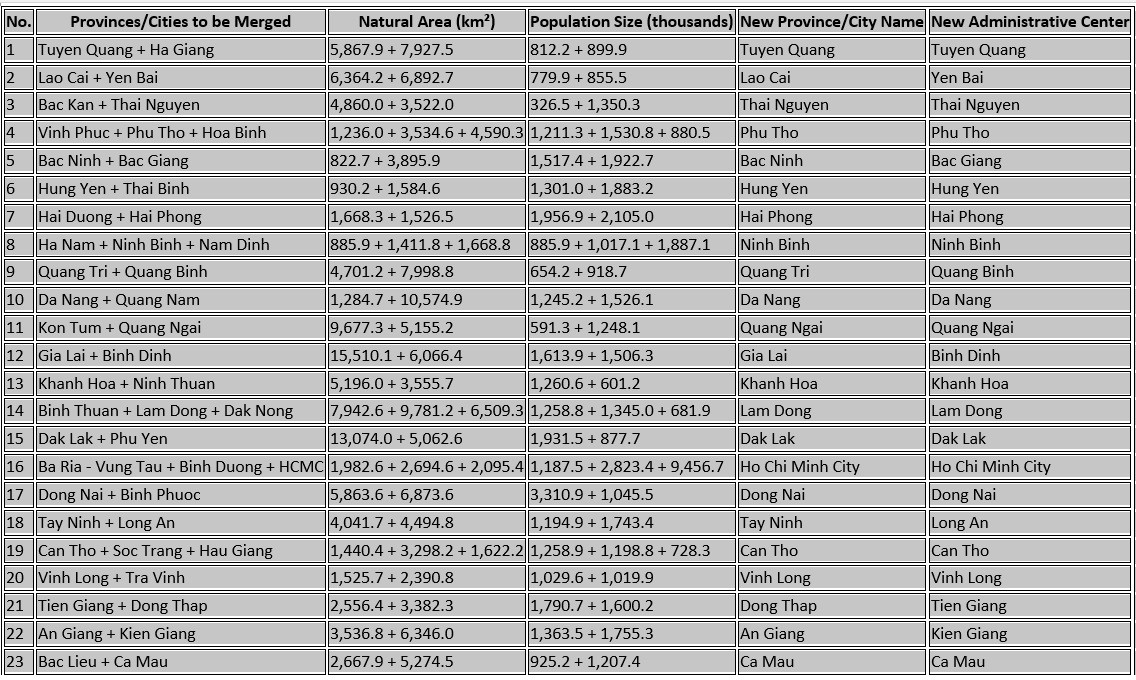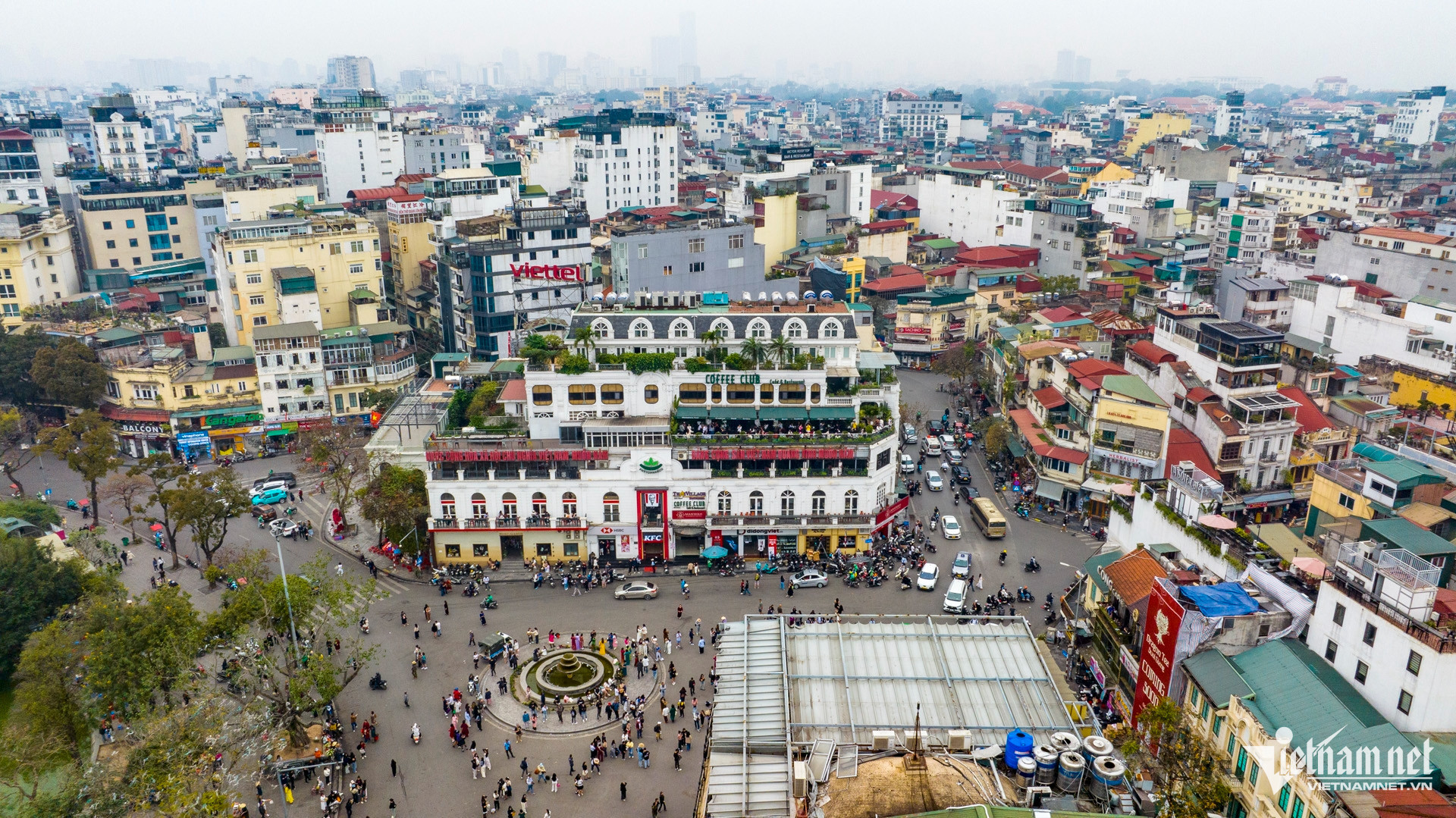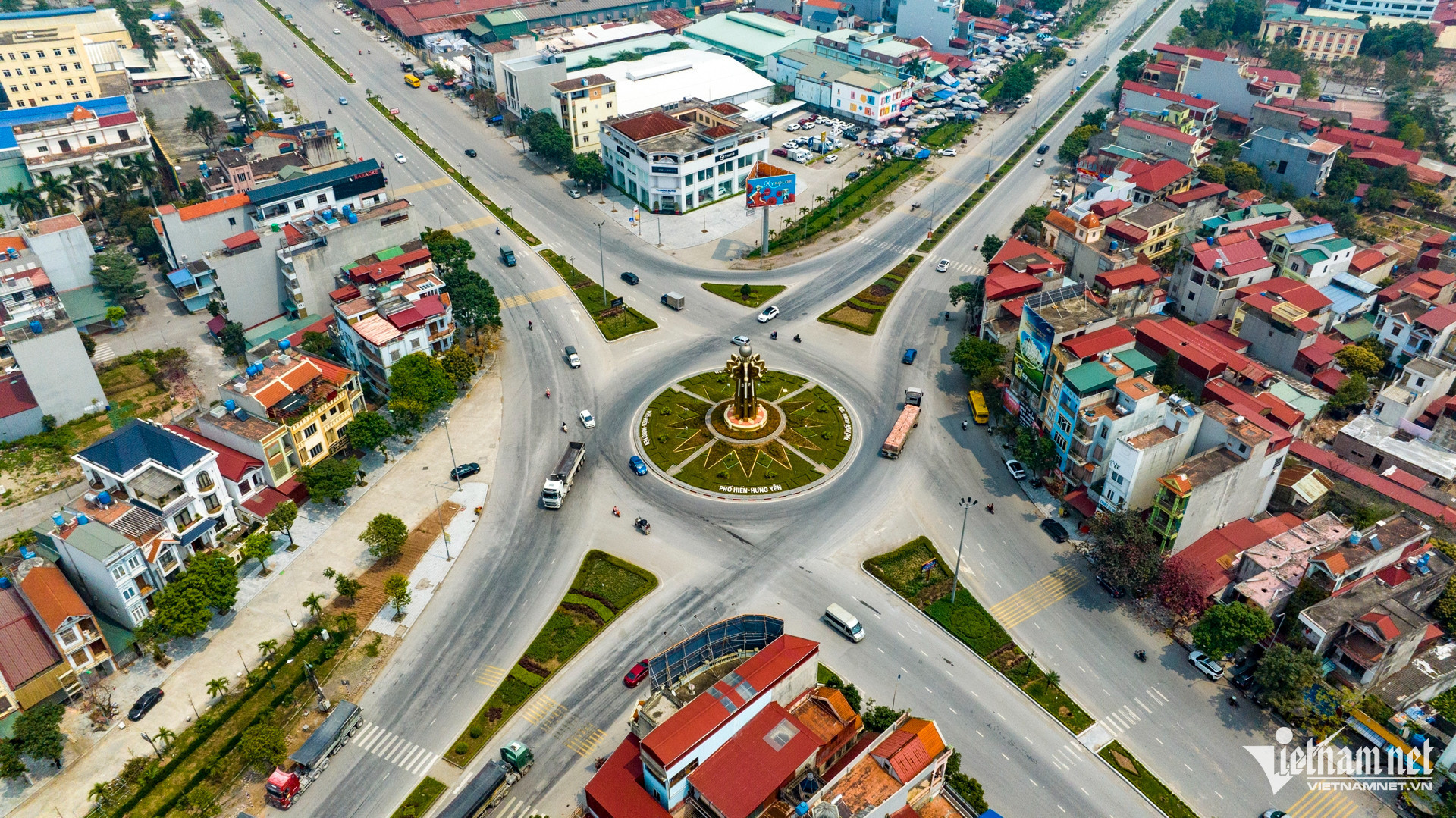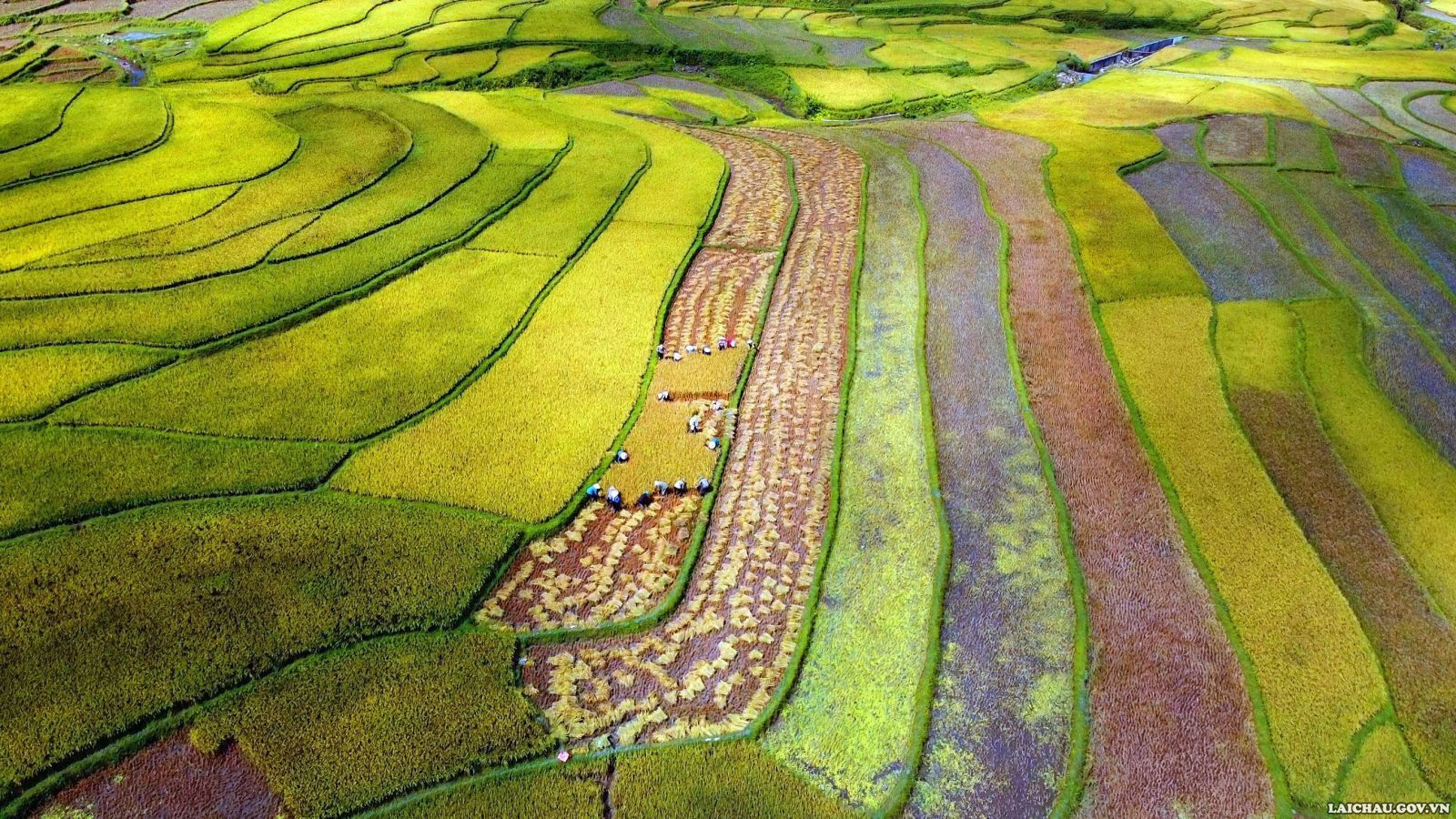The Central Government has agreed to consolidate the country’s administrative map, resulting in a total of 34 provincial-level units: 28 provinces and 6 centrally governed cities.
Of the new 34 provinces and cities, 11 will retain their current status without merging, while the remaining 23 will be formed from the merger of 52 existing provinces and cities.
Proposed provincial mergers and new administrative units

Provinces retaining original administrative structure

Largest province by area after merger
According to official data, after merging Lam Dong (9,781.2 km²), Dak Nong (6,509.3 km²), and Binh Thuan (7,942.6 km²), the new Lam Dong province will span a total area of 24,233.1 km².

This makes it the largest administrative unit in the country, far exceeding Nghe An’s current area of approximately 16,500 km².
The three provinces are located in distinct economic regions - Central Highlands and South Central Coast - and each has unique geographical, demographic, and economic characteristics.
Their merger is expected to unlock significant regional connectivity potential: from high-tech agriculture in Lam Dong to renewable energy and mineral resources in Dak Nong, and coastal economy and tourism in Binh Thuan.
Most populous province after merger

After merging Ho Chi Minh City with Binh Duong and Ba Ria-Vung Tau, the new mega-city will become the most populous administrative unit in Vietnam.
HCM City has over 9.456 million people, Binh Duong over 2.8 million, and Ba Ria-Vung Tau nearly 1.19 million, for a combined total of approximately 13.5 million people.
This will create a super-urban zone with a population surpassing all other provinces and cities in the country - larger than many small nations.
These three localities are part of Vietnam’s Southern Key Economic Zone, known for its robust economic, transportation, and industrial linkages, and are collectively among the highest GDP contributors in the country.
The new region could rival other major Southeast Asian hubs such as Bangkok, Jakarta, and Manila.
Top three most densely populated areas after merger

Hanoi: 2,555.5 people/km²
Ho Chi Minh City: 1,565 people/km²
Hai Phong: 1,060 people/km²
After the merger of 52 provinces into 23, the average area of each new province will be 7,735 km², with an average population of 2.621 million and an average population density of 339 people/km².
In comparison, the 11 provinces and cities that remain unchanged have an average area of 8,830 km², a population of 2.326 million, and a lower average population density of 263 people/km².
This shows that the unchanged provinces generally have larger areas but lower population densities, especially in mountainous provinces like Lai Chau, Cao Bang, and Dien Bien, which have fewer than 100 people/km².
Hanoi stands out among the unmerged provinces, boasting the highest population density in the country—nearly 2,555 people/km²—far ahead of all others.
Smallest province by area after merger

After merging Hung Yen and Thai Binh, the resulting province will have a total area of 2,514.8 km², making it the smallest in the country.
However, it has a relatively high population density - 1,265 people/km² - indicating significant urbanization and population concentration in the Red River Delta region.
On the other hand, Lai Chau, which remains unchanged, will have the smallest population in the country at 489,300 and the lowest population density at just 53.9 people/km².

Lai Chau, a highland province in Northwest Vietnam, has rugged terrain that poses challenges for infrastructure development and regional connectivity. Some districts remain relatively isolated, affecting population growth and economic development.
The province's population is mostly rural and mountainous, living in scattered settlements. Urban development remains limited. While Vietnam’s national average population density is around 300 people/km², Lai Chau’s is only about one-sixth of that.
Nguyen Thao